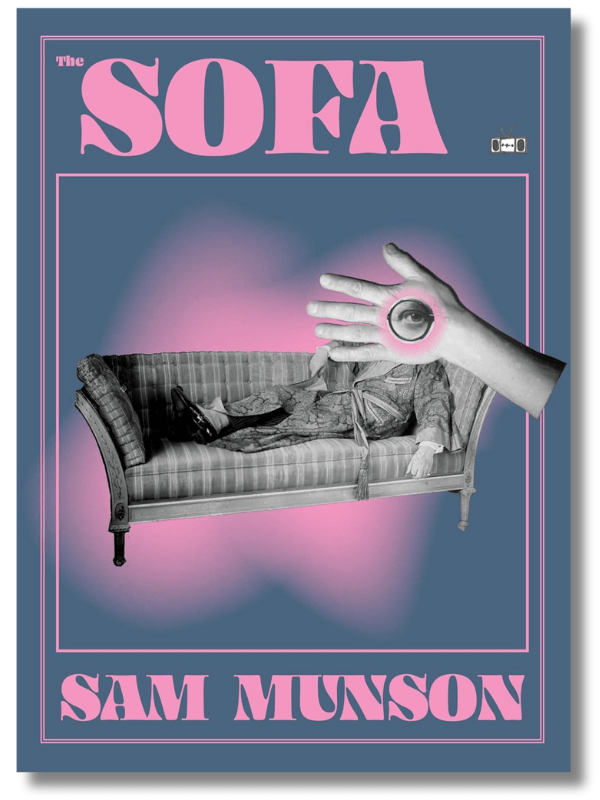The Sofa
by Sam Munson
Genre: Literary Fiction / Horror
ISBN: 9781953387974
Print Length: 162 pages
Publisher: Two Dollar Radio
Reviewed by Nick Rees Gardner
Reality is twisted and sanity jumbled in Sam Munson’s surreal psychological novel, The Sofa.
The Montessoris are a typical upper-middle class American family: a husband and wife, two boys, a house with a nice yard, a couch that they congregate on and around after soccer practice (the boys) and work (the adults) in the evening. But when they wake up one morning to find that their couch has been stolen and replaced by an antique one, their comfortable lives get lumpy, off-kilter, uncomfortable.
While the rest of the family seems to accept the replacement furniture after a short time, Mr. Montessori struggles with the mysterious imposter. He lets the strange switch get to his head, twisting his psyche and playing on his burgeoning paranoia.
Like any good work of uncanny psychological horror, Sam Munson allows the reader to uncover the mystery of the couch along with Montessori. Even though the novel is written in third person point of view, and rather distant, the reader is sucked into Montessori’s mind as he begins hearing the bathroom sink turn on when no one else is in the house. Or the toilet flush. Or when a strange man pops up in seemingly random places. Munson keeps the reader hooked on the mystery because the mystery keeps evolving into more strangeness while Montessori dissolves into perplexity. The reader hopes to make sense of the disappearing/reappearing couch, but Munson never lets on that an answer will be found.
While the mystery is enough to make the short book engrossing, Munson’s narrator invites the reader into the story describing “A long administrative nothing,” with the direct address to the reader, “You know all about it.” These asides to the reader become more and more frequent as the story goes on. While this tactic often tends to pull the reader away from the story, because of the consistency and simplicity of Munson’s narrative voice, the reader is drawn closer to Montessori, even to the point of feeling strange themselves.
The Sofa is surreal, with twists and turns and even diction that is sometimes off-putting enough to feel like an error, so these asides to the reader only add to the edge-of-your-seat appeal to the psychological horror.
The language Munson uses feels off because of its simplicity, sometimes cut through with beautiful phrases. For example, Munson uses many simple phrases like, “The phone rang. It was his wife.” But then, out of nowhere, he will employ descriptions that are fresh, rich in detail and relishing in a unique yet accurate understanding of the world, not to mention their deep musical resonance. One perfect example: “The night was black, utterly green-black. The sawing sound of crickets and the liquid calls of birds.” This language allows the story to evolve quickly enough to suck the reader in, but beautiful enough to quietly blow the reader’s mind.
When the ending hits like a couch dropped from a tenth story building, it feels so abrupt, so immediate that it’s almost a let-down. This is, in part, due to Munson’s delicious and brain-melting prose. But it is also due to Montessori’s downward spiral, a devolution that is as alluring to watch as it is offsetting.
While any good work of horror (especially psychological horror) should affect its reader soul-deep, The Sofa weaves the reader into its very fabric. It is consuming, so the reader is consumed at the same rate as Montessori. It’s a blessing that The Sofa can be devoured in a sitting or two. Otherwise many more readers might lose their minds.
Thank you for reading Nick Rees Gardner’s book review of The Sofa by Sam Munson! If you liked what you read, please spend some more time with us at the links below.
The post Book Review: The Sofa by Sam Munson appeared first on Independent Book Review.
